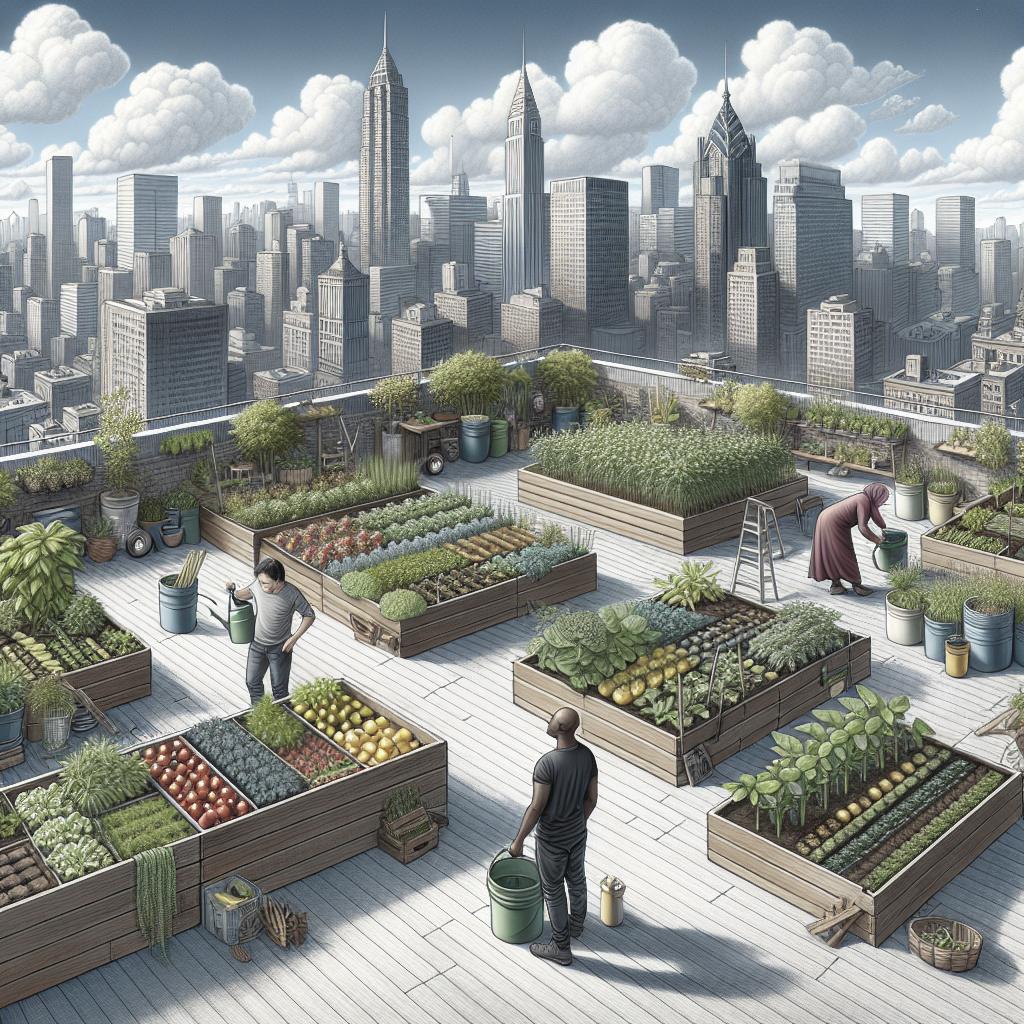Starting a rooftop garden in urban areas is not only a fantastic way to utilize underused spaces but also provides numerous benefits such as improved air quality, reduced urban heat islands, and fresh produce at your fingertips. This comprehensive guide will walk you through each step of establishing your green haven in the city, covering essential aspects such as selecting the right containers, choosing suitable soil, managing wind challenges, ensuring proper watering, and fertilizing with compost. Whether you’re looking to grow vegetables, herbs, or flowers, following these steps will help you create a thriving rooftop garden that enhances both your living space and the environment.
Containers
Choosing the right containers is the first major step in starting a rooftop garden. Your containers need to be robust enough to withstand varying weather conditions while providing adequate space for the plants to grow. Options range from traditional terracotta pots and wooden planters to modern fabric pots and raised beds. Consider the weight of the containers when filled with soil, as rooftops have weight limits that need to be adhered to. Drainage is another critical factor. Ensure that the containers have adequate drainage holes to prevent waterlogging, which can lead to root rot and other plant diseases. Adding a layer of gravel at the bottom can further assist in drainage and keep the plants’ roots healthy. Opt for containers with built-in saucers to catch excess water and prevent it from staining your rooftop.
Soil
Using the right soil mix is vital for the success of your rooftop garden. Container soil must be well-aerated and light, which means traditional garden soil is not suitable. A good mix typically includes potting soil, compost, and perlite or vermiculite to enhance aeration and drainage. Some soil mixes also contain slow-release fertilizers to give your plants a nutrient boost over time. It’s also essential to regularly refresh the soil to maintain its fertility. Adding compost or organic matter can replenish the nutrients that plants have consumed. This also improves soil structure, ensuring better water retention and root growth. Conducting a soil test can help you understand its pH level and nutrient content, allowing you to amend it accordingly.
Wind
Wind can be a significant challenge for rooftop gardens, as higher elevations usually mean stronger gusts. To mitigate this, consider installing windbreaks such as lattices, trellises, or even outdoor fabric screens around your garden area. These structures can help reduce wind impact without completely blocking airflow, which is necessary to prevent fungal issues. Additionally, selecting wind-tolerant plants can make your garden more resilient. Look for low-growing, compact plants with sturdy stems. Ground covers, herbs like thyme and sage, and hardy perennials are often good choices. You can also cluster plants closely to create a microenvironment that reduces wind damage.
Water
Watering is a crucial aspect of rooftop gardening, especially since container plants tend to dry out faster than those in the ground. Implementing an efficient watering system can save you time and ensure your plants get consistent moisture. Drip irrigation systems or soaker hoses are excellent options as they deliver water directly to the root zone, reducing evaporation and water waste. If a systemic solution isn’t feasible, hand-watering is also effective but requires more time and attention. It’s essential to water deeply and infrequently rather than giving the plants a light sprinkle. This encourages roots to grow deeper, making the plants more drought-tolerant. Always monitor the soil moisture level to prevent either under-watering or over-watering.
Fertilizing / Compost
Proper fertilization is key to maintaining a flourishing rooftop garden. Organic fertilizers are preferable as they improve soil health over time, unlike synthetic options that can degrade soil quality. Slow-release granular fertilizers can provide a steady supply of nutrients to your plants. Liquid fertilizers are also effective, especially during the growing season when plants need extra nutrients for blooming and fruiting. Composting is a sustainable way to enhance soil fertility. Kitchen scraps, garden waste, and even coffee grounds can be composted to create nutrient-rich humus. Make sure your compost is well-balanced with a mix of greens (nitrogen-rich materials) and browns (carbon-rich materials) to avoid unpleasant odors and create a healthy compost. Adding a layer of compost to your containers annually can significantly boost plant growth and soil health.
Next steps
Here’s a summary of the key steps involved in starting a rooftop garden in urban areas:
| Aspect | Key Points |
|---|---|
| Containers | Choose robust containers, ensure adequate drainage, consider weight limits. |
| Soil | Use light, aerated potting soil; refresh soil regularly, add compost. |
| Wind | Install windbreaks, select wind-tolerant plants, cluster plants strategically. |
| Water | Implement drip irrigation or hand-water deeply, monitor soil moisture. |
| Fertilizing / Compost | Use organic fertilizers, compost kitchen and garden waste, balance nutrients. |
By following these guidelines, you can create a sustainable and vibrant rooftop garden that adds beauty and utility to your urban space. Happy gardening!


